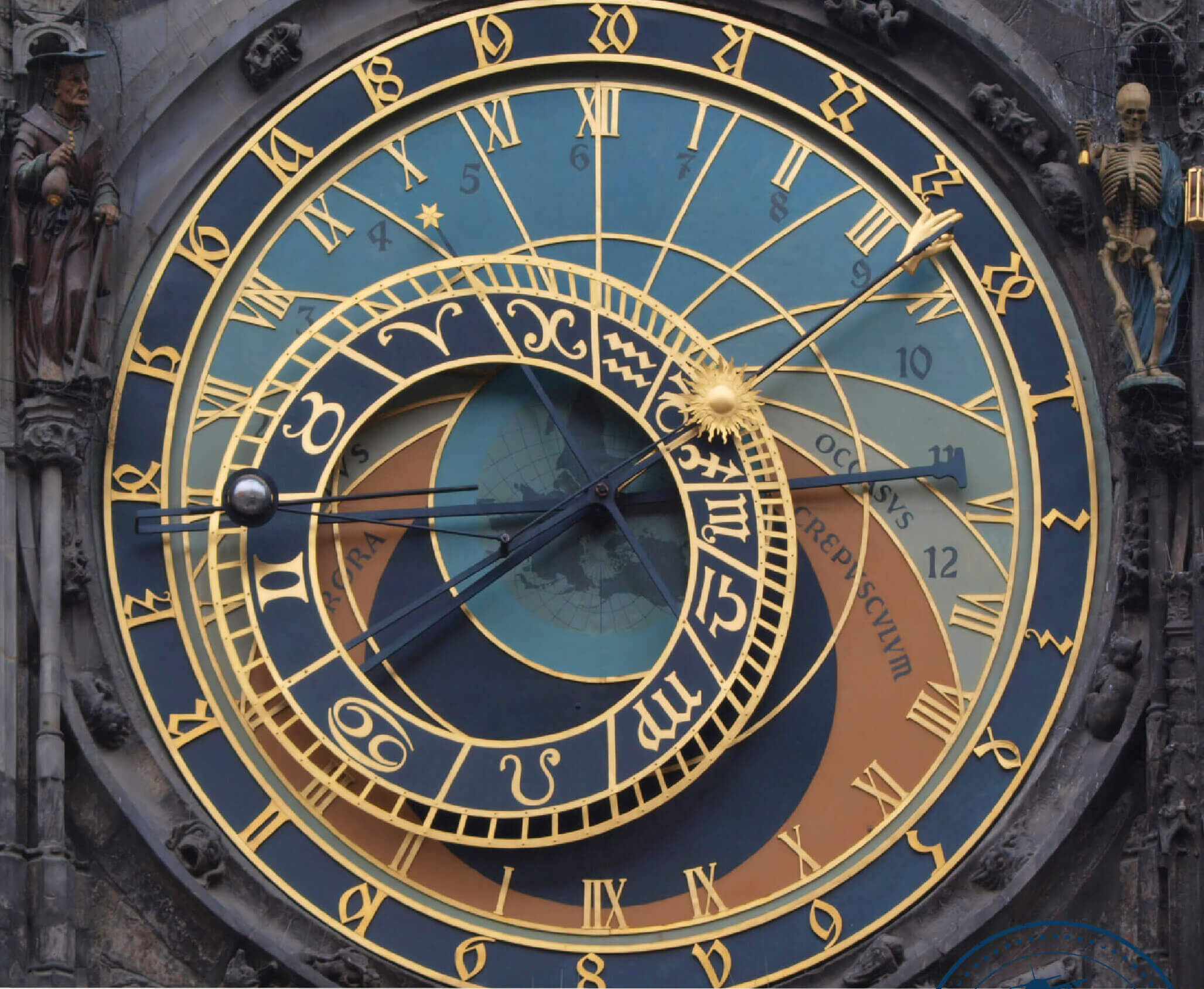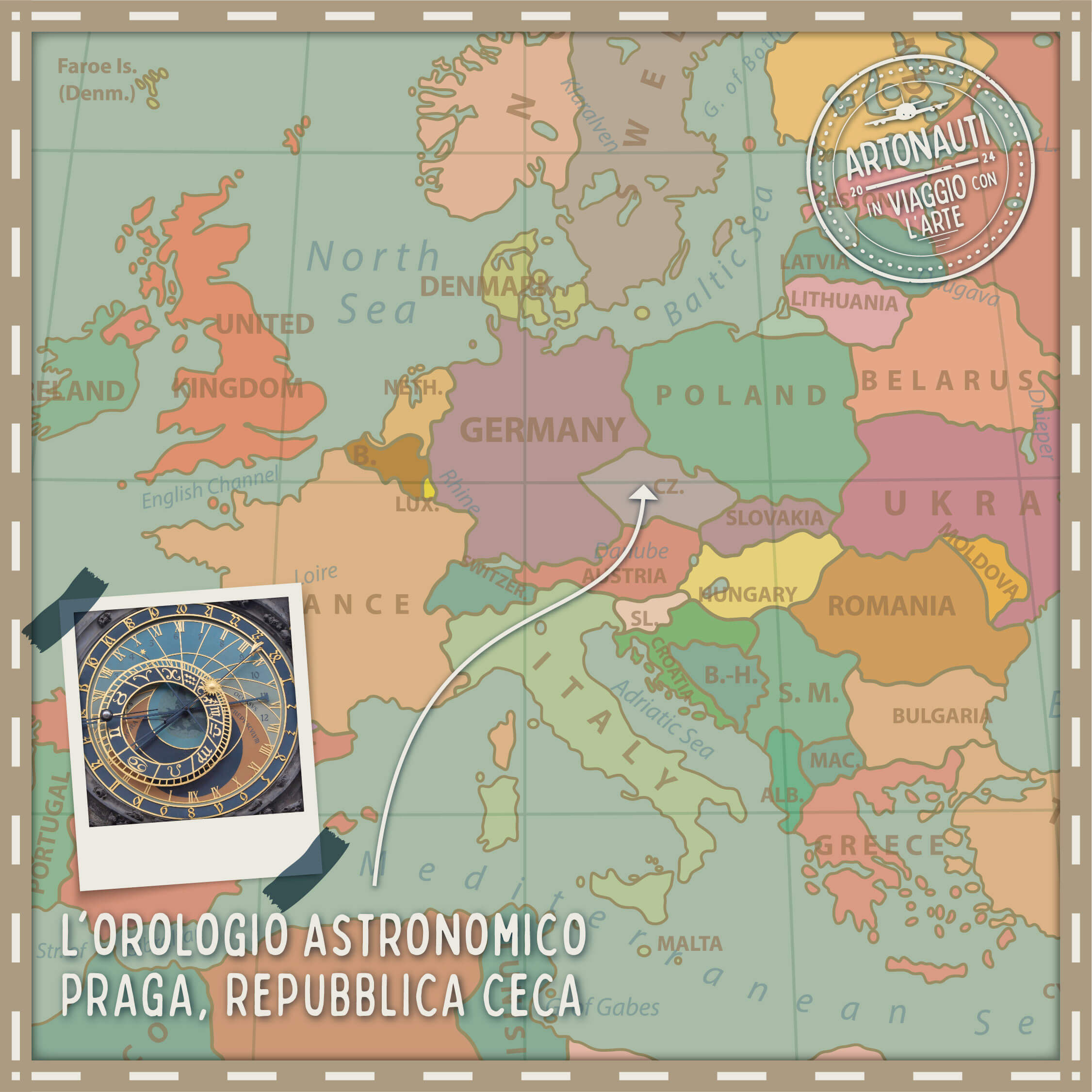The wonder clock

If you plan to go to Prague, you cannot miss the astronomical clock in the Old Town Square. The oldest elements date back to 1410: art, technique and scientific knowledge have enchanted visitors ever since.
In addition to giving information about the time, the position of the sun and moon, the equinoxes, and the constellations of the zodiac, the Prazly Orloj puts on a puppet show every 60 minutes.
A marvel of the time, the story goes that the watchmaker who devised it was blinded by order of the councilors of the city of Prague so that it could not be replicated elsewhere.
In revenge, the watchmaker stopped the mechanism and only reactivated it when the city council allowed him to continue as a watchmaker.
Since then, the failure of the mechanism has been interpreted by citizens as a bad omen.
To propitiate good fortune over time amulets have been placed: if you look carefully you will find in defense of this place a winged angel, basilisks, creatures that in case of danger petrify enemies, and a golden rooster that in addition to crowing every hour would drive away demons.

Technically, the astronomical clock consists of three main elements: the astronomical dial in the shape of an astrolabe in which astronomical information and the positions of the Sun and Moon are represented.
Four mechanisms move in unison: a zodiac ring with the 12 signs of the zodiac arranged counterclockwise, a rotating outer ring, the hand with the sun symbol, and the hand with the moon symbol.
Above the dial, statues of the 12 apostles come alive every 60 minutes along with figures representing the deadly vices.
On one side the Vain looks at himself in the mirror and the Miser weighs his purse full of coins, on the other the Moor, symbol of Lust, shakes his head, while at his side the skeleton symbolizing Death, turns the hourglass upside down and pulls the string that activates the procession of Apostles who come out one by one with distinctive symbols that allow them to be recognized, e.g. St. Paul with a book in his hand, St. Thomas and a spear, St. Simon and a saw…
In 1490 a calendar was added to the lower part consisting of 12 medallions representing the months of the year. The scenes are a reproduction of the work by Josef Mànes, exhibited at the Prague City Museum.
The clock marks 4 different times: central European time, ancient Bohemian time , sidereal time, and Babylonian time.